
Smart projects to make life easier
LED-based traffic lights control system
The EzloPi smart devices provide automation through simple, customizable use with our open-source EzloPi platform, making daily life easier and improving human-machine interactions.
Before moving into this example, it is very important to know about the device registration, provisioning and converting the ESP32 device into an EzloPi device along with knowledge of Web Flasher, MiOS Mobile Application for Android/iOS and the MiOS Web Application.
1. About this example
This project uses an LED traffic light module interfaced with the EzloPi device to efficiently manage traffic signals. The designed system mimics real-world traffic light operations by controlling red, yellow, and green LEDs in a sequential manner, ensuring smooth traffic flow. This project can be expanded to include smart traffic management features such as sensor-based adaptive control, making it ideal for educational, prototyping, or small-scale automation purposes. The system demonstrates an easy-to-implement smart and cost-effective solution for traffic signal simulation.
3. Circuit Diagram & Interface
The following components are required for interfacing with the EzloPi device:
- ESP32 as an EzloPi smart device.
- LED traffic light module.
The wiring diagram of ESP32 30 pin is represented as follows:


The following connections are made in order to complete the circuit setup.
From ESP32 to the Traffic Light Module:
| ESP32 | Traffic Light module |
| GND | GND |
| D15 | R(Red) |
| D4 | Y(Yellow) |
| D5 | G(Green) |
4. Interfacing the LED Traffic Lights with the EzloPi Web Flasher:
1. Set up your device/hardware by visiting config.ezlopi.com

- Log in using the credentials which you just set earlier while signing up.

- Now, click on the Connect Device button and a pop-up window will appear.

- Now, select COM Port to which your ESP32 device is connected. In our case, the COM3 port is used.
Click Connect

- If you are new to this and it's your first time configuring, select Create new Device ID. Enter Wifi SSID and Wifi Password.
- In the Device Configuration, tab click on Digital Output.
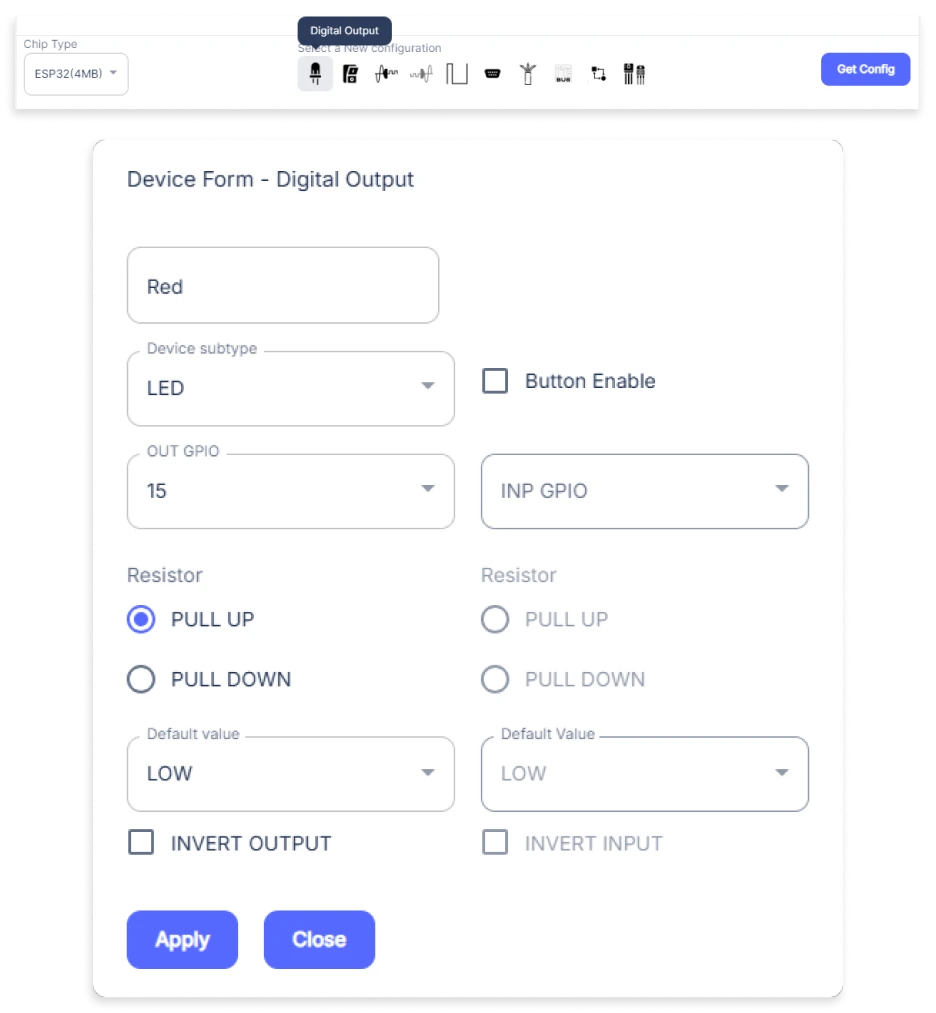
- A Digital Output window will open for inputting the following parameters:
- Set a Device name of your choosing. In our case, we set it to the Red.
- Set Device Subtype to LED.
- Set the OUT GPIO to 15.
- Set the Resistor to PULL UP.
- Then Click Apply Button.
- Again, In the Device Configuration, tab click on Digital Output.

- A Digital Output window will open for inputting the following parameters:
- Set a Device name of your choosing. In our case, we set it to the Yellow.
- Set Device Subtype to LED.
- Set the OUT GPIO to 4.
- Set the Resistor to PULL UP.
- Now Click the Apply button.
- Then Click Apply Button.
- Again, In the Device Configuration, tab click on Digital Output.

- A Digital Output window will open for inputting the following parameters:
- Set a Device name of your choosing. In our case, we set it to the Green.
- Set Device Subtype to LED.
- Set the OUT GPIO to 5.
- Set the Resistor to PULL UP.
- Then Click Apply Button.
- After clicking the apply button you can see a table of your setting in the device configuration tab.
- Now press the Flash Device Button.
- A window will appear on the bottom right side of the screen displaying “Please press BOOT button while flashing begins.”

- Hold the BOOT button down until the next window appears on the bottom right side of the screen which says “Installation prepared. Please release the boot button now.”
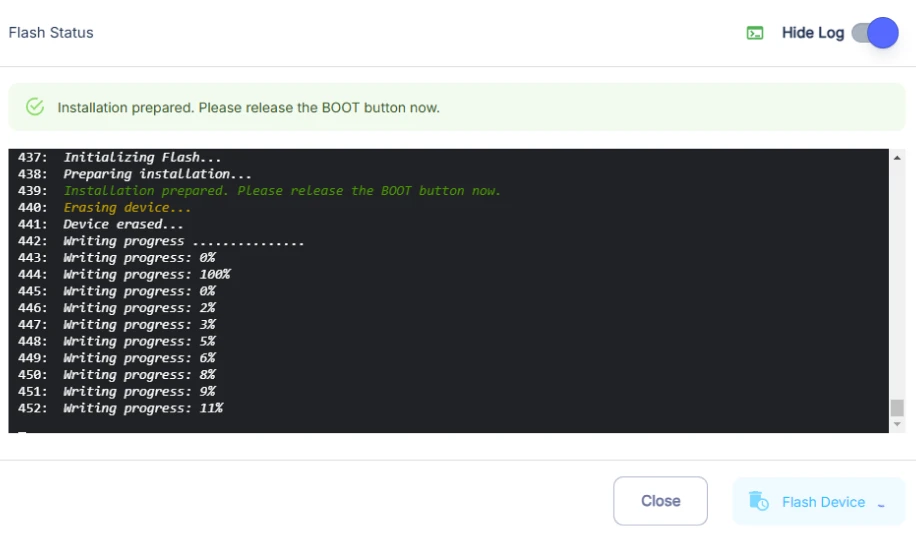
- Release the BOOT button from your ESP32 when this pop-up on the bottom right window appears.

- After some time, a popup will appear saying Device Flashed Successfully! This means that your device has been set up successfully.
5. MiOS Web Dashboard
- After configuring the controller with the EzloPi web flasher, head to ezlogic.mios.com

- Use the same credentials to log in that you used for configuring the controller with the web flasher.

- On the MiOS web dashboard, you will be able to see the tiles of connected devices. In our case, we have three visible tiles for the LED traffic lights which are Red, Yellow and Green. These LED tiles will imitate the general traffic lights as demonstrated on the roads.
MeshBots:

- On the left side of the screen under Automation, click on MeshBots.
- On meshbot screen, click on Create new MeshBot button present on the top right corner of the screen.
- After clicking on Create new MeshBot, you will see this now under Automation MeshBot click on EzloPi.

- On the next screen you will see that we can create a name of our choosing, in this case we write it as Test011.

- In the trigger tab you can set the TRIGGER for your device and in the ACTION tab you can set the action to be performed based on the trigger which you have created.

- Set these things in TRIGGER section:
- Set Node Type to Date and Time.
- Set the Node to Interval.
- Set the Value to 15.
- Set the Value Type to Seconds.
- Set these values in the True part of the ACTION section.
- Set Controllable Type to Device.
- Set the Controllable to Red.
- Set the Capability to switch.
- Set the value to true.
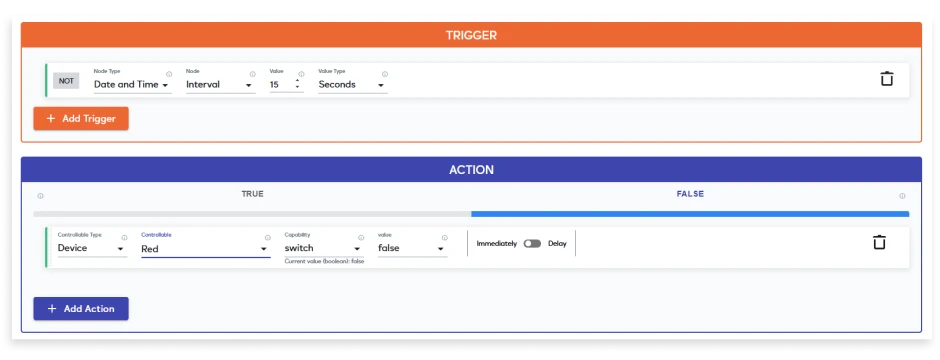
- Set these values in the False part of the ACTION section.
- Set Controllable Type to Device.
- Set the Controllable to Red.
- Set the Capability to switch.
- Set the Value Type to set.
- Set the value to false.
- Again Click on Create new Meshbot and under Automation MeshBot click on Cloud.
- On the next screen you will see that we can create a name of our choosing, in this case we write it as Test012.

- In the trigger tab you can set the TRIGGER for your device and in the ACTION tab you can set the action to be performed based on the trigger which you have created.

- Set these things in TRIGGER section:
- Set Node Type to Date and Time.
- Set the Node to Interval.
- Set the Value to 15.
- Set the Value Type to Seconds.
- Set these values in the TRUE part of the ACTION section.
- Set Controllable Type to Device.
- Set the Controllable to Yellow.
- Set the Capability to switch.
- Set the value to true.
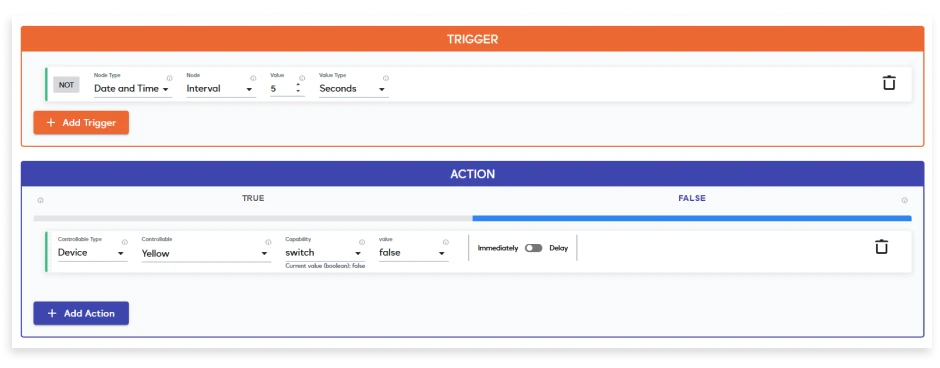
- Set these values in the FALSE part of the ACTION section.
- Set Controllable Type to Device.
- Set the Controllable to Yellow.
- Set the Capability to switch.
- Set the Value Type to set.
- Set the value to false.
- Again Click on Create new Meshbot and under Automation MeshBot click on Cloud.
- On the next screen you will see that we can create a name of our choosing, in this case we write it as Test013.

- In the trigger tab you can set the TRIGGER for your device and in the ACTION tab you can set the action to be performed based on the trigger which you have created.

- Set these things in TRIGGER section:
- Set Node Type to Date and Time.
- Set the Node to Interval.
- Set the Value to 10.
- Set the Value Type to Seconds.
- Set these values in the TRUE part of the ACTION section.
- Set Controllable Type to Device.
- Set the Controllable to Green.
- Set the Capability to switch.
- Set the value to true.

- Set these values in the FALSE part of the ACTION section.
- Set Controllable Type to Device.
- Set the Controllable to Green.
- Set the Capability to switch.
- Set the Value Type to set.
- Set the value to false.
- Now Click the Save button.

- After clicking the save button you can see this screen on the top right corner of the screen.

- Here, you can see your saved MeshBot. Now click on Dashboard.
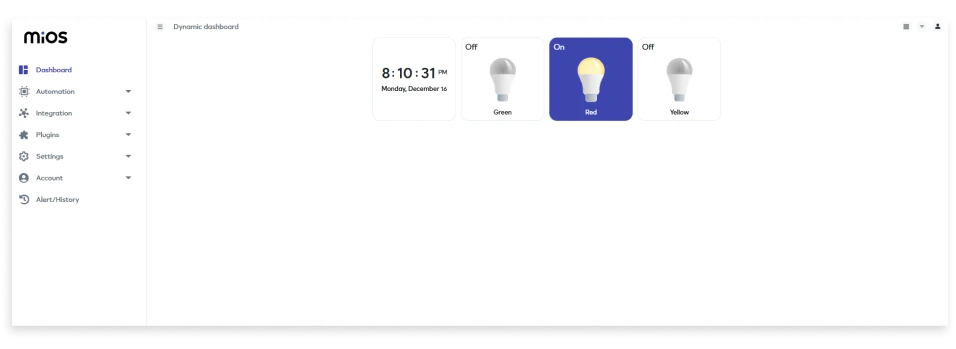


- Here as seen above in the three pictures on the MiOS web dashboard, we can see that as we have applied the time meshbot to the three LEDs just like traffic lights so the Red LED lights up for 15 seconds, Yellow LED light up after 10 seconds together with Red LED for 5 seconds and then they both turn OFF. Green LED turns ON for 10 seconds just as we set it in the meshbot.
6. MiOS App
You can download the MIOS Android app from the Google Play Store and Apple App Store.
- After downloading the app, proceed to install the application and open it.

- Using the MIOS mobile application, create a new Ezlo Cloud account using the sign-up option. If you already have an account, you may proceed to log in.

- After successfully logging in, you will be able to see the number of controllers connected such as a lamp, fan, or any other device in the MiOS app. Tap on any controller of your desired ID:
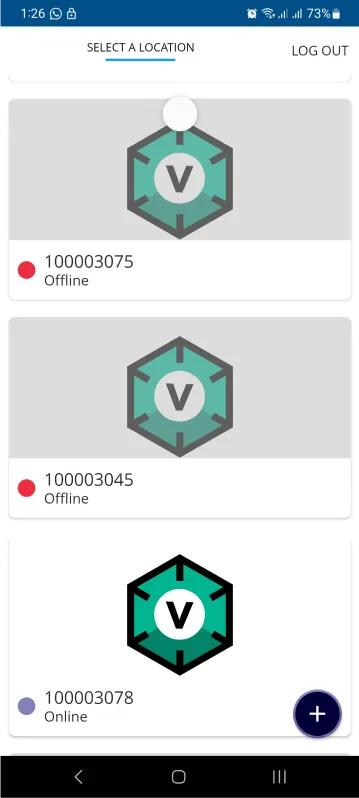
- You will be able to see the status of your controller whether it is online or offline. Access the device dashboard, and tap the device. The following view of the dashboard will appear:
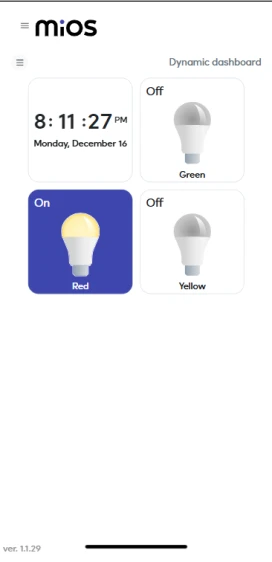

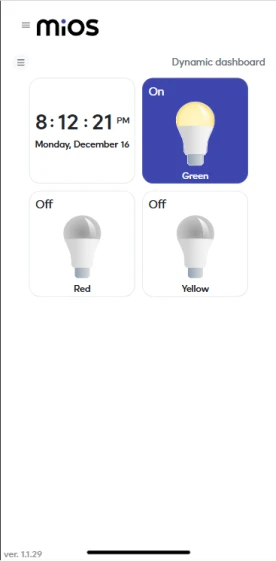
- Here as seen above in the three pictures on the MiOS mobile application, we can see that as we have applied the time meshbot to the three LEDs just like traffic lights so the Red LED lights up for 15 seconds, Yellow LED light up after 10 seconds together with Red LED for 5 seconds and then they both turn OFF. Green LED turns ON for 10 seconds just as we set it in the meshbot.

eZlopie Products A single-channel 5V relay module $00.00

eZlopie Products Momentary switch $00.00

eZlopie Products Level Shifter Module (BSS138) $00.00

eZlopie Products ESP32
$00.00

eZlopie Products AC Lamp and Holder
$00.00












